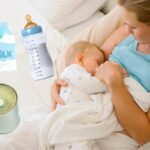
European experts disapprove the use of titanium dioxide nanoparticles in toys
Chalk, powder paint, molding kits: SCHEER evaluates the safety of toys containing titanium dioxide.
The European Scientific Committee on Health, Environmental and Emerging Risks (SCHEER) has issued an opinion evaluating the safety of titanium dioxide (TiO₂) in toys. This opinion was requested in the light of TiO2’s classification as a category 2 carcinogen after inhalation. This opinion arrives at the following conclusions:
- Regarding inhalation exposure : in the case of potential presence of an ultrafine (i.e. nanometric) fraction, safe use of TiO₂ is NOT assured for molding kits, chalk and powder paints ; only white colored crayons can be used without risk or with negligible risk by children, even in the presence of an ultrafine fraction in the TiO₂ preparation.
- Concerning oral exposure, safe use is indicated only when the absence of an ultrafine fraction in TiO2 pigments can be demonstrated through an appropriate methodology.
SCHEER highlights that the results of in vitro studies show an increased risk from TiO₂ at the nano scale1Cf.page 9 : “It can be observed that in studies on TiO2 in nanosize, the results (mainly in vitro studies) show higher probability of positive response than in studies on microsize or with sizes slightly above 100 nm. It is possible that a probability of a genotoxic effect diminishes as the size of TiO2 increases, and the observed positive effects can depend on the presence of a nanofraction.”. It emphasizes that it is the responsibility of manufacturers to systematically demonstrate the absence of any ultrafine fraction or negligible ultrafine fraction in TiO2 pigment preparations.
The committee concludes by recommending further research to assess the safety of pigment TiO2 in toys, particularly by conducting studies on genotoxicity, particle size distribution, and TiO2 release from toys and materials.

Other news on the subject
The next nano meetings

- Webconference for analysis laboratories, plant fertilizer manufacturers and distributors, public authorities…
- Moderated by David Krupka, nanotechnologies development manager at AFNOR Normalisation and Emilie Langlois-Bertrand, nantechnologies standardization project manager.
- In partnership with Armand Masion, CNRS Research Director, and Sandrine Mocoeur, Health, Safety, Environment and Quality Manager at SYNGENTA.
- This exchange will also be an opportunity to explore the creation of a national platform to identify standardization needs.
- Website: www.afnor.org/evenement/nanotechnologies-agriculture-cadre-pratique-responsable/
- 8th Congress of Occupational Medicine and Health (CNMST 2026)
- Theme 5: Emerging pathologies and risks, Mr Henri Bastos (ANSES), Pr Lynda Bensefa-Colas (AP-HP), Dr Catherine Nisse (CHU Lille)
- Website: www.medecine-sante-travail.com
- 20th meeting of the “nano and health” dialogue committee
- Organizer: ANSES
Notes and references
- 1Cf.page 9 : “It can be observed that in studies on TiO2 in nanosize, the results (mainly in vitro studies) show higher probability of positive response than in studies on microsize or with sizes slightly above 100 nm. It is possible that a probability of a genotoxic effect diminishes as the size of TiO2 increases, and the observed positive effects can depend on the presence of a nanofraction.”



